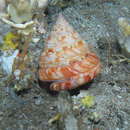en
names in breadcrumbs


Snails (Gastropoda) are the largest Mollusk subgroup, with about 400 living familes and tens of thousands of species. Snails are globally distributed in nearly every habitat, on land and under water. Most marine and aquatic snails are benthic, but a few are swimmers. Snails encompass a myriad of lifestyles, from predators to algae grazers, as well as an incredible diversity of form, most obviously in the shape and position of the shell- or its absence. When present, the shell is usually coiled, and usually, but not always, in a right-handed direction. Sometimes an operculum is also present, a door which fits in the opening of the coiled valve, shutting the animal inside for defense. In some snails the entire shell is internal, covered with skin. In groups lacking the protection of a shell, like the nudibranchs, many species are elaborately colored, either to blend with a similarly colored background, or to warn predators of noxious taste. Some pelagic snails, both shelled and shell-less, are transparent.